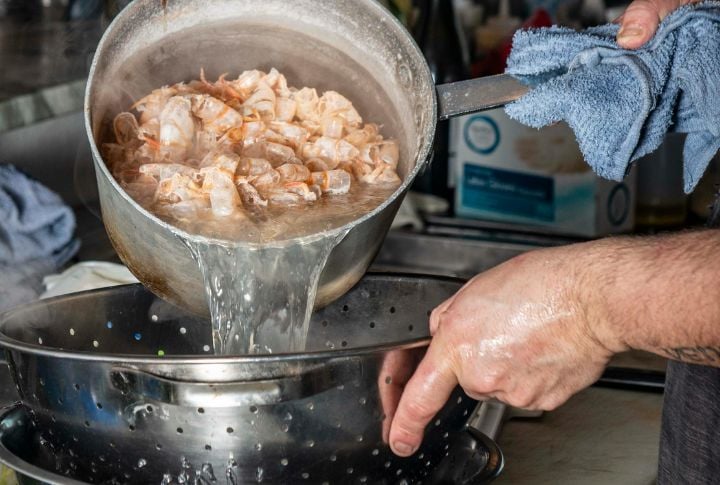15 Important Tips To Create And Safely Feed Bone Broth To Dogs

Bone broth is more than just a warm treat for dogs—it’s a nutrient-rich boost that can strengthen their health. Making it at home ensures quality, but feeding it safely matters just as much. Follow these essential tips to create and introduce bone broth the right way.
Choose High-Quality Bones For Optimal Nutrition

Not all bones are the same, particularly when it comes to your pooch’s health. Grass-fed or pasture-raised bones are loaded with nutrients like collagen and omega-3 fatty acids, along with vital minerals. So, ensure you’re getting good quality because it’s the foundation for a broth that nourishes their bodies.
Select The Right Type Of Bones

Larger dogs benefit from beef or bison bones, which supply more marrow and nutrients. Smaller dogs, on the other hand, may do well with chicken or turkey bones. Matching the bone to your dog’s size maximizes health benefits and ensures ease of digestion.
Roast Bones For Extra Flavor

Roasting bones before making broth intensifies their flavor and enhances nutrient extraction. By placing bones in the oven at a high temperature for 20-30 minutes, you caramelize the outside, enriching the broth with a deeper taste that your dog will find irresistible. It also helps kill harmful bacteria.
Slow-Cook For Maximum Nutrient Extraction

For optimal results, avoid shortcuts. The bone broth needs time, so slow-cook it. The longer it simmers, the more nutrients it releases. Set your crockpot on low and go about your day. After hours of simmering, you’ll have a broth that is dense in goodness your dog will appreciate.
Add Vegetables

Think bone broth’s all about bones? Think again. Tossing in a handful of dog-friendly veggies like carrots and spinach doesn’t just add flavor; they’re packed with fiber and vitamins. By including them, you create a more balanced broth that adds variety to the pet’s diet.
Use Apple Cider Vinegar To Extract Nutrients

Adding apple cider vinegar to the pot before simmering helps break down bone structure, allowing for better mineral extraction. This simple step enriches the broth with calcium and magnesium, all vital for your pooch’s joint health. Vinegar also supports digestive health and strengthens the immune system.
Avoid Toxic Ingredients

A good broth can turn bad if you add the wrong stuff. Keep away from onions and salt because they can mess with dogs’ health in a big way. Stick to the basics: bones and safe veggies. It’s that simple—no need for the extras because this is not a French Onion Soup for yourself.
Monitor The Broth Consistency

The broth’s consistency matters because it affects how easy it is for your dog to digest and absorb nutrients. If it’s too thin, it might not carry enough minerals. Too thick, and it could upset sensitive stomachs. Adjust with bones, veggies, or water until it’s smooth and balanced.
Cool It Down Before Serving

Hot broth is a big no-no for your pup. Not only can it burn their mouth, but cooling it down helps the fats separate, making it easier to skim. Let it chill out before you serve. It also gives the broth time to thicken and concentrate those tasty, nutritious flavors.
Strain The Broth For A Smooth Finish

Once the simmering’s done, straining the broth is a must. You don’t want your pet munching on small bone fragments or vegetable bits. The goal is a smooth, clear broth that dogs can drink and digest. This final step is essential for safety and taste.
Store The Broth Properly

If there is extra broth, store it properly to keep it fresh. Refrigerate it for up to a week or freeze smaller portions for better, prolonged use. Keeping it on hand makes mealtime easier, whether as a treat or a tasty meal booster.
Use Filtered Water For Cleaner Broth

The water you use matters. Tap water often contains chlorine, heavy metals, or other additives that can dilute the nutritional quality of the broth or harm sensitive dogs. Starting with filtered or purified water ensures the broth stays clean, safe, and rich in health-boosting minerals.
Use A Variety Of Bones For Broader Nutrient Profiles

Using a variety of bones, like beef marrow, poultry, or safe fish, increases the pooch’s nutrient intake. Different bones provide unique minerals and amino acids coupled with healthy fats. Rotating them also creates a perfectly seasoned broth and keeps your dog excited and engaged at mealtime.
Introduce Bone Broth Gradually

Start with small amounts when adding bone broth to a dog’s meals. Giving the digestive system time to adjust prevents stomach upset. Gradually increasing the serving size based on preference and tolerance helps maximize the nutritional benefits without overwhelming sensitive systems.
Observe Results

After a few weeks of bone broth, pay attention to how your pet’s doing. Are their joints less creaky? Does their coat look shinier? Bone broth delivers significant benefits over time, improving everything from hydration to digestion. Watch for both positive and negative changes to ensure it is benefiting and not harming your dog.






